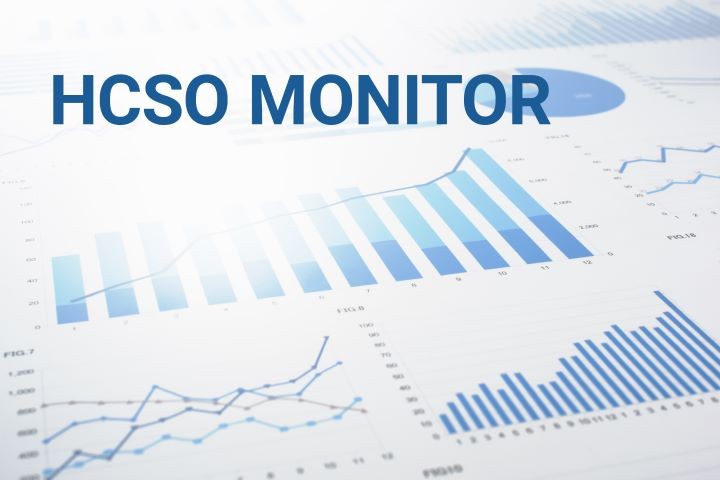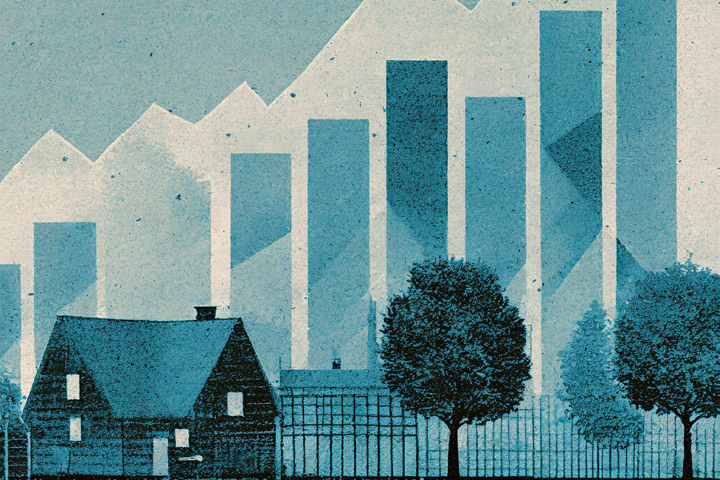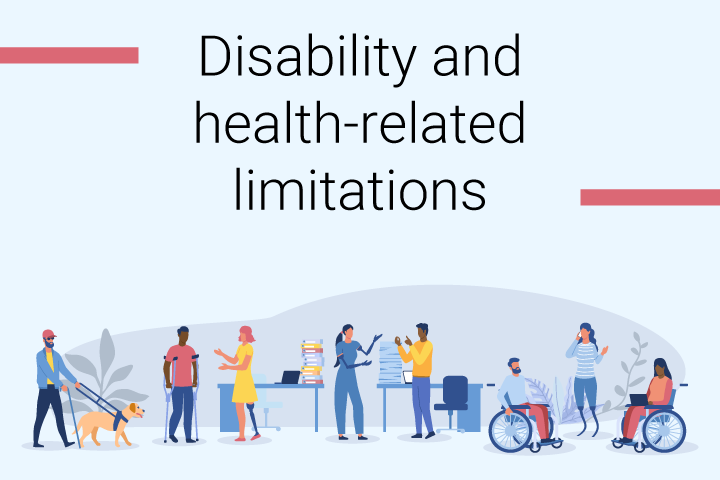Key figures
Inflation
Indicator description
Average change in the prices of goods and services purchased by households for own use, compared to the same period of the previous year. The consumer price index less 100 equals the inflation rate.
Source:
Summary tables (STADAT)
Latest data: –
GDP
Indicator description
Gross domestic product is the sum of gross value added produced by industries or sectors, valued at basic prices, and of the balance of taxes and subsidies on products, which cannot be divided by industry or sector, less financial intermediation services not divided by industry or sector. GDP volume change compared to the same period of the previous year is presented based on unadjusted data.
Source:
Summary tables (STADAT)
Latest data: –
Adjusted population
Indicator description
The full-scope censuses conducted every ten years show a comprehensive picture of the number and composition of the population. For determining the annual population number in the period between two censuses, the starting point is the population number of the last census (currently the census with the reference date of 1 October 2022), and from this, the population was estimated by using natural increase or decrease data available from the statistics of vital events until 2000. From 2001 international migration is also taken into account.
Source:
Summary tables (STADAT)
Latest data: –
Unemployment rate
Indicator description
The ratio of unemployed persons to the economically active population of corresponding age. The indicator can be calculated for different age groups, the default is the age group 15–74. Further selected age groups: 15–24, 25–54, 55–74.
Source:
Summary tables (STADAT)
Latest data: –
Employment rate
Indicator description
The ratio of employed persons to the population of corresponding age. The indicator can be calculated for different age groups, the default is the age group 15–64. Further selected age groups: 15–24, 25–54, 55–64 and 20–64.
Source:
Summary tables (STADAT)
Latest data: –
Industrial production
Indicator description
We measure changes of industrial production by variations of industrial production values, however the impact of price change is filtered out. We calculate the volume index of production based on comparative prices data of the industrial production value (presented at reference period price levels).
Source:
Summary tables (STADAT)
Latest data: –
Featured
HCSO Monitor
The collection of interactive figures provides up-to-date information on the latest domestic and international socio-economic trends.
The decisive part of the figures included in HCSO Monitor are downloadable in both image and data formats (PNG, SVG and CSV).
Feel free to browse the data in HCSO Monitor, updated many times a week!
Latest update: 11/12/2025
The decisive part of the figures included in HCSO Monitor are downloadable in both image and data formats (PNG, SVG and CSV).
Feel free to browse the data in HCSO Monitor, updated many times a week!
Latest update: 11/12/2025
Snapshots, 2024 – Benefits and allowances
Family-policy benefits (direct and indirect together) exceeded 4% of GDP in Hungary in the last five years. Out of direct family benefits, family allowance was paid to 1,050 thousand families in 2024. 858 thousand people received local social benefit, and local governments spent a total of 25.3 billion forints on subsidisation, which was nearly 29,500 forints per capita on an annual average. Nearly 1 million parents benefitted from family tax allowance, its total amount exceeding 360 billion forints.
12/12/2025
12/12/2025
Snapshots, 2024 – Time use
After 15 years the HCSO conducted a time use survey: a comprehensive picture has been obtained during the 2024/2025 data collection about the time management of the Hungarian population aged 15 to 74. According to preliminary data time spent on socially fixed activities (work, learning, chores) grew on average to 8.5 hours per day, and to 4.8 hours, also more than before, on leisure activities. Now, average physiologically fixed activities (eating, sleeping, hygiene) decreased to the lowest level measured up until now (10.7 hours).
12/12/2025
12/12/2025
Housing prices, housing price index, Q2 2025
In the second quarter of 2025, the rapid price increase observed in the first quarter continued at a more moderate pace in the housing market. At the same time, following the substantial growth in 2024 and the slight increase at the beginning of 2025, housing market turnover declined. Prices of second-hand homes, which account for the overwhelming majority of transactions, rose by 3.5%, while new homes became 4.2% more expensive compared with the previous quarter. Overall, the combined housing market price level exceeded that of a year earlier by 18% in nominal terms and by 13% in real terms.
09/12/2025
09/12/2025
HCSO–ingatlan.com-rent index, October 2025
In October 2025, rental prices declined for the second consecutive month: nationwide they fell by 0.7%, while in Budapest they were 1.0% below the previous month’s level. The October nominal rent index exceeded the 2015 base by 125% nationwide and by 114% in the capital, corresponding to increases of 30% and 24% in real terms. Over the past year, nominal rents rose by around 5–6%, while real rents increased by approximately 1–2%.
09/12/2025
09/12/2025
Did you know? – Book
14,298 books have been published in Hungary in 2024, in 30 million copies.
If you liked it, check out our data visualisations at this link: www.ksh.hu/datavisualisations
09/12/2025
If you liked it, check out our data visualisations at this link: www.ksh.hu/datavisualisations
09/12/2025
Snapshots, 2024 – Health care
In 2024, nearly two-thirds of the Hungarian population aged 16 and older were satisfied with their health; men felt this way at a rate almost 6 percentage points higher than women. In connection with the healthcare wage increases of recent years, the number of active physicians per ten thousand inhabitants increased from 44 to 45 in one year. At the same time, the number of general practitioners and family paediatricians continued to decrease; their number was 5,469 in 2024, an average of 5.7 per ten thousand inhabitants.
05/12/2025
05/12/2025
Snapshots, 2024 – Nonprofit sector
In 2024, there were 61 thousand nonprofit organisations in Hungary, whose number increased by 1.7% compared to 2023. As in previous years, the activities of the foundations were mostly related to education, social services and culture, while among social nonprofit associations, leisure and sports associations and cultural organisations were present in the largest number. The sector's weight in the national economy was 4.7%, based on the average of GDP-proportionate revenue and the proportion of employed persons.
05/12/2025
05/12/2025
St. Nicholas Day, 2025
Every child eagerly waits to find a Santa Claus package filled with sweets in their boots in the morning of 6 December. In Hungary, 44 manufacturers produced 76 thousand tonnes of chocolate and sugar confectionery in 2024. Nearly four-fifths of the chocolate sold was purchased in domestic stores, while 85% of the sugar confectionery was exported.
05/12/2025
05/12/2025
Disability and health-related limitations
Over the past fifteen years, there has been a slight decline in the proportion of people who felt limited in carrying out their everyday activities due to their health condition. In 2024, a little more than one-fifth of the population was affected. In settlements with a higher share of elderly residents—often owing to the presence of institutions dedicated to senior care—the proportion of those reporting limitations was also higher. By contrast, the share of people with limitations was lower in the capital and major urban agglomerations, where younger populations are more prevalent.03/12/2025
First releases
News, events
- HCSO publishes November motor fuel price statistics, 05/12/2025
- Official statistics is not an opinion, 28/11/2025
- Final sprint for the European Health Interview Survey, 26/11/2025
- Experimental Statistics and Innovation at the HCSO – New Data, New Approaches, 25 November 2025, 26/11/2025
- Launch of the Agricultural Census of Individual Farms, 17/11/2025









